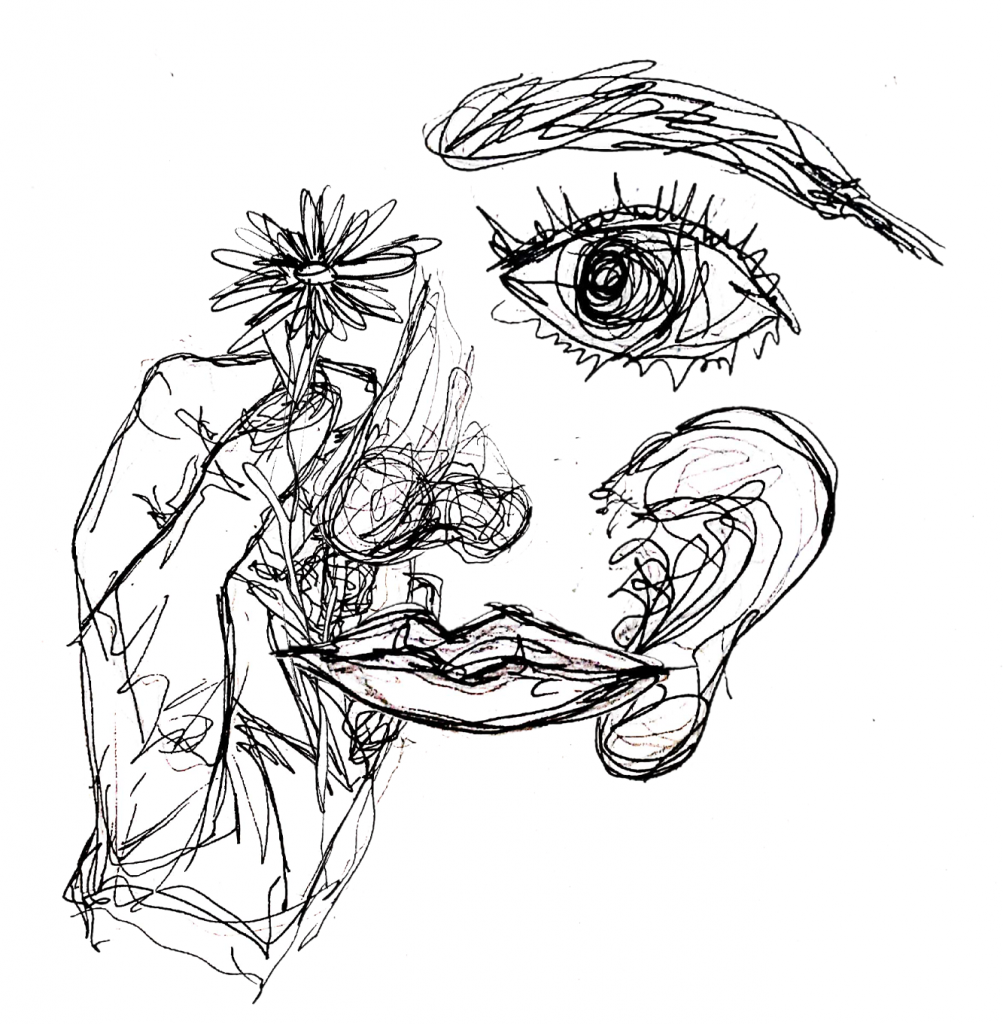The therapeutic benefits of Green Care Farms can be enhanced through thoughtful consideration of the multi-sensorial experience in the landscape. This can be achieved through the use of grading, spatial design, and planting – the foundation of landscape architecture.
The following is a set of ideas, probing questions, and resources intended to guide the practitioner in their process of designing Green Care landscapes for people living with dementia.
Drawing by Meredith Wilson
Key Principles
The design of the built environment for people living with dementia should be methodical and thoughtful. Keep the following key principles in mind:
-
-
-
- Consider the group for which you are designing. What is their mobility level? What are their physical and cognitive abilities? What level of care will they need?
- Prioritize safety and comfort. How can you minimize confusing or frustrating situations?
- Focus on the strength and abilities of the participants rather than limitations. What are their interests? Can participants contribute to the design of the landscape or program?
- Create opportunity for autonomy and independence.
- Make space for both stimulating and restorative experiences.
-
-
Resources:
The 5 Senses
Nature-based healing is achieved through multisensorial engagement with the landscape. This can be achieved passively and actively, with natural and manmade materials, and with the immediate and greater landscape.
Understanding the sensorial experience requires deep site immersion. Upon visiting the site, consider:
-
-
-
- Sight: Natural/human? Close/Far? Static/Dynamic?
- Sound: Natural/Human? Good/Bad? Magnitude? Frequency/Seasonality?
- Smell: Natural/Human? Good/Bad? Magnitude? Frequency/Seasonality?
- Touch: Consider Hands/Feet/Body; What would clients be able to touch? (e.g. hardy crops, farm equipment, etc.) What does the site feel like?
- Taste: Harvested/Prepared food? Flavour? Seasonality?
-
-
Throughout the ideation phase, consider:
-
-
-
-
- How might someone who is living with dementia experience the landscape?
- How can the five senses be used to induce respite? Stimulate reminiscence? Encourage social connection? Here, landscape design and programming should be in harmony.
-
-
-
Resources:
-
-
-
-
- "Sense...ible Parks and Gardens," Daniel Roehr 2020
- "Gardens are... Buildings: A Garden's Role in Unprecedented Times," Daniel Roehr 2020
-
"A Review of the Benefits of Nature Experiences: More Than Meets the Eye," Franco et al. 2017
-
-
-
Grading
Proper site design should always begin with grading of the space. Effective grading and drainage will dictate the integrity of the design and can be used as a tool for healing.
-
-
-
- Grading: Safety requirements will depend on mobility of clientele. Make sure paths even, wide enough with slopes at a maximum of 2%.
- Drainage: Where will water flow? Where will water pool? Keep water off of paths and consider drainage for planting purposes.
- Experience: How can we use topography to enhance healing? Consider surrounding views; different experiences in high points and low points; the flow of water.
- Exercise: Consider using variety in grading to provide different levels of physical challenges for clients of different abilities.
-
-
Resources:
Space
The healing process can only begin when one feels safe and comfortable in the space around them. There are certain aspects of spatial design that should be considered for people living with dementia to create a safe and restorative environment.
-
-
-
- Compatibility: The space should be easy to understand and minimize frustrating or confusing situations. Use landmarks, distinctive sub-areas, and spatial order to support wayfinding.
- Enclosure: Varying levels of enclosure may provide comfort and prevent wandering. Consider an inward orientation of space. Clearly mark entrance and exit points. Make sure all areas of the garden are visible to caregivers.
- Light & Perception: Designs should take into account any difficulties of depth perception and visual perception. Try and minimize reflectivity, use gradual changes in light intensity, and shade resting areas.
- Experience: How can we create a restorative landscape through spatial design? How can we create a visually rich and engaging landscape? How can we encourage exploration and involvement?
-
-
Resources:
Planting
Planting design is one of the best tools landscape architects have to support connection to nature for healing purposes. In the development of a plant palette, consider the following:
-
-
-
- Program: What will the planting be used for? Is the priority of this space production or aesthetics? Will clientele be interested in co-developing a plant palette?
- Safety and Accessibility: Plants in a dementia garden need to be non-toxic and non-irritating. Consider selecting colours that are high-contrast and easy to see. Think about access; would raised beds be beneficial? Any specialty tools to make gardening easier?
- Ecology: How can we benefit local ecology through planting? Landscape architecture should always strive to benefit the local ecosystem through the use of natives, pollinator planting, soil regenerators etc.
- Healing: How can we use planting design to enhance healing? Think deeply about the multi-sensorial qualities of plants. Which plants are calming? Stimulating? Which plants might trigger reminiscence?
-
-
Resources:
-
-
-
-
- Dementia Friendly Garden in Port Macquarie, Australia
- "Planting Design: Connecting People and Place," Patrick Mooney 2019
- A Design Guide for Sensory Gardens, Sensory Trust
-
-
-
